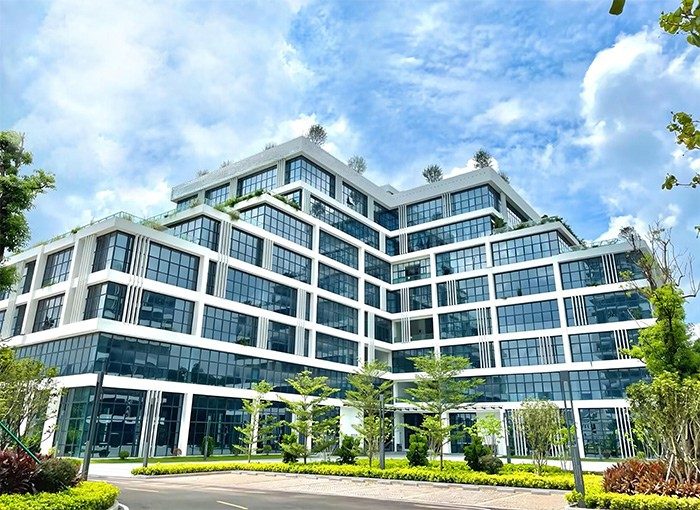In dynamometer of engineering and material science, few concepts are as pivotal yet underappreciated as torsional stiffness. Whether you’re designing a cutting-edge sports car 🏎️, a skyscraper that defies the wind 🌆, or even a humble bicycle frame 🚴, understanding and measuring torsional stiffness can spell the difference between success and catastrophic failure. But what exactly is torsional stiffness, and why should industries care about it? Let’s dive into the science, the tools, and the real-world impact of this critical measurement.
---
**What Is Torsional Stiffness? A Crash Course**
Torsional stiffness refers to a material’s or structure’s resistance to twisting when subjected to torque. Imagine wringing a wet towel versus twisting a steel rod—the towel deforms easily (low stiffness), while the rod resists (high stiffness). In engineering terms, this property ensures that components maintain their shape and functionality under rotational stress.
Why does this matter? Think of a car’s chassis. When taking a sharp turn, torsional forces act on the frame. A chassis with insufficient stiffness might flex, compromising handling and safety. Conversely, a rigid chassis ensures precise control and durability. From aerospace to consumer electronics, torsional stiffness is the unsung hero of structural integrity.
---
**The Science Behind the Measurement 🔬**
Measuring torsional stiffness isn’t just about applying torque and seeing what happens—it’s a precise dance of physics and technology. Here’s how experts do it:
1. **Defining the Parameters**: Engineers first identify the axis of rotation and the material’s geometry. A cylindrical shaft, for instance, has different stiffness characteristics compared to a rectangular beam.
2. **Applying Torque**: A controlled torque is applied to the object, often using servo motors or hydraulic systems. Sensors track the resulting angular displacement (how much the object twists).
3. **Calculating Stiffness**: By dividing the applied torque by the angle of twist, engineers derive the torsional stiffness value. https://anotepad.com/notes/rgh4b7e3 is critical for comparing materials and validating design simulations.
Advanced tools like laser interferometry and strain gauges have revolutionized these measurements, enabling micron-level precision. For industries like automotive or renewable energy, such accuracy isn’t just a luxury—it’s a necessity.
---
**Real-World Applications: Where Torsional Stiffness Saves the Day 🌍**
Let’s step out of the lab and into the field. Here are three industries where torsional stiffness measurement isn’t just useful—it’s transformative.
**Aerospace 🛩️**
Modern aircraft wings must withstand immense forces without warping. By optimizing torsional stiffness, engineers reduce weight while maintaining strength—a balance that improves fuel efficiency and safety.
**Construction 🏗️**
Skyscrapers sway in the wind, but too much flex can lead to structural fatigue. Torsional stiffness measurements help architects design cores and frameworks that resist twisting, ensuring stability in hurricanes or earthquakes.
**Medical Devices 🩺**
Surgical tools like arthroscopic probes require extreme precision. If the shaft twists unpredictably, a surgeon’s steady hand could slip. High torsional stiffness ensures reliability in life-or-death scenarios.
---
**Case Study: The Race to Build a Better Electric Vehicle 🚗⚡**
Electric vehicles (EVs) are reshaping the automotive landscape, but their unique design challenges demand innovative solutions. Unlike traditional cars, EVs house heavy batteries low in the chassis, altering weight distribution and torsional dynamics.
A leading EV manufacturer recently partnered with a materials lab to test torsional stiffness in their new model. Using robotic actuators and real-time data analytics, the team identified weak points in the frame. By reinforcing these areas with carbon-fiber composites, they achieved a 20% increase in stiffness without adding significant weight. The result? A smoother ride, longer battery life, and a five-star safety rating.
This case underscores a universal truth: In competitive markets, mastering torsional stiffness isn’t just technical—it’s strategic.
---
**The Future of Torsional Stiffness Measurement 🌟**
As industries push the boundaries of innovation, measurement technologies are evolving too. Here’s what’s on the horizon:
- **AI-Driven Predictive Models**: Machine learning algorithms can now predict torsional behavior based on material composition, reducing the need for physical prototypes.
- **Portable Testing Kits**: Field engineers are adopting handheld devices that deliver lab-grade measurements on-site, slashing project timelines.
- **Sustainable Materials**: With the rise of eco-friendly composites, accurate stiffness testing ensures these alternatives meet industrial standards.
The next decade will see torsional stiffness measurement shift from a niche specialty to a cornerstone of smart manufacturing.
---

**Why You Can’t Afford to Ignore Torsional Stiffness 🚨**
Whether you’re a startup prototyping a drone or a legacy brand refining a turbine, cutting corners on torsional stiffness is a gamble. The costs of failure—recalls, reputational damage, or worse—far outweigh the investment in precise measurement.
Partnering with experts who combine cutting-edge tools with deep domain knowledge isn’t just prudent; it’s a competitive edge. After all, in a world where every gram and millimeter counts, torsional stiffness is the invisible force holding progress together.
---
**Ready to Optimize Your Designs? Let’s Talk! 🤝**
Don’t let uncertainty twist your projects off course. Embrace the power of precise torsional stiffness measurement and build systems that stand the test of time—and torque. Contact our team today to explore how we can elevate your next innovation from “good enough” to “engineered excellence.” 💡
---
[End of Article]
